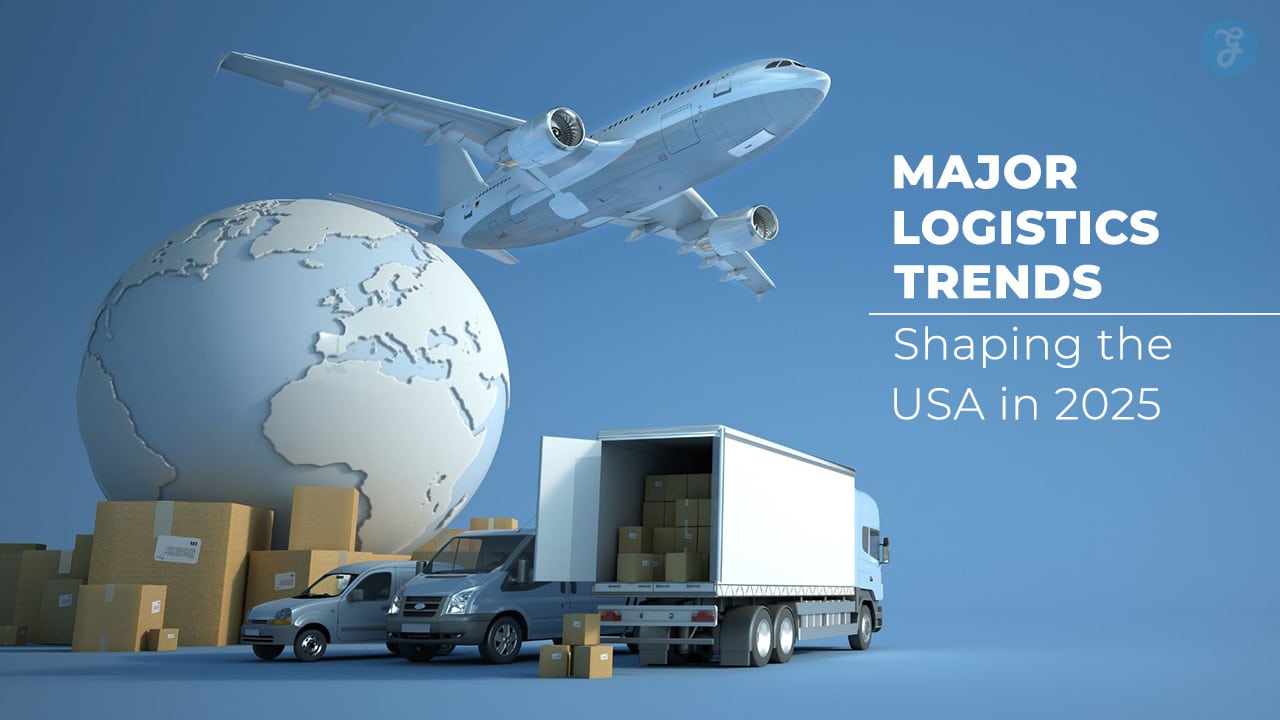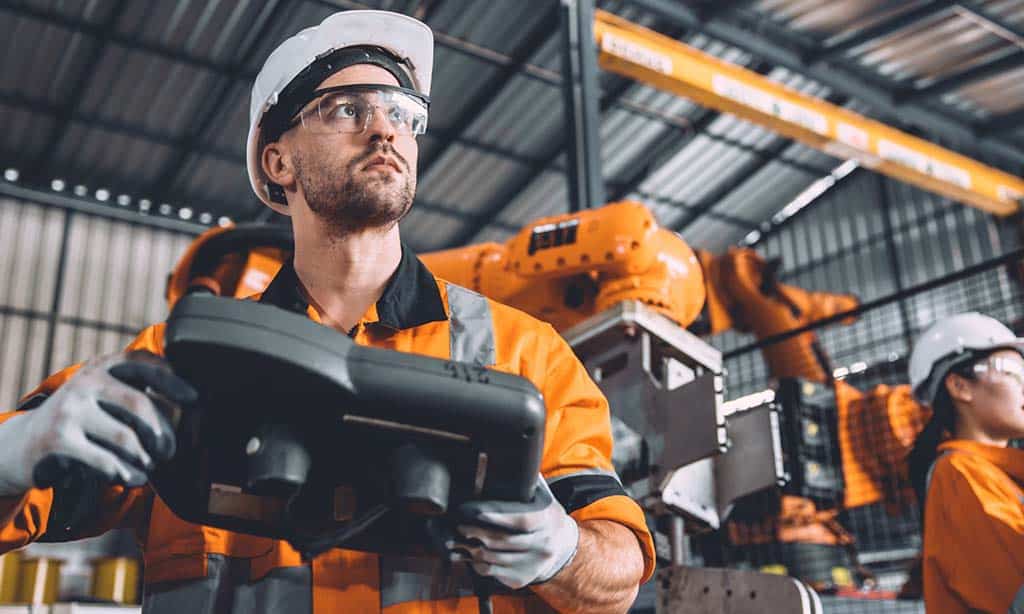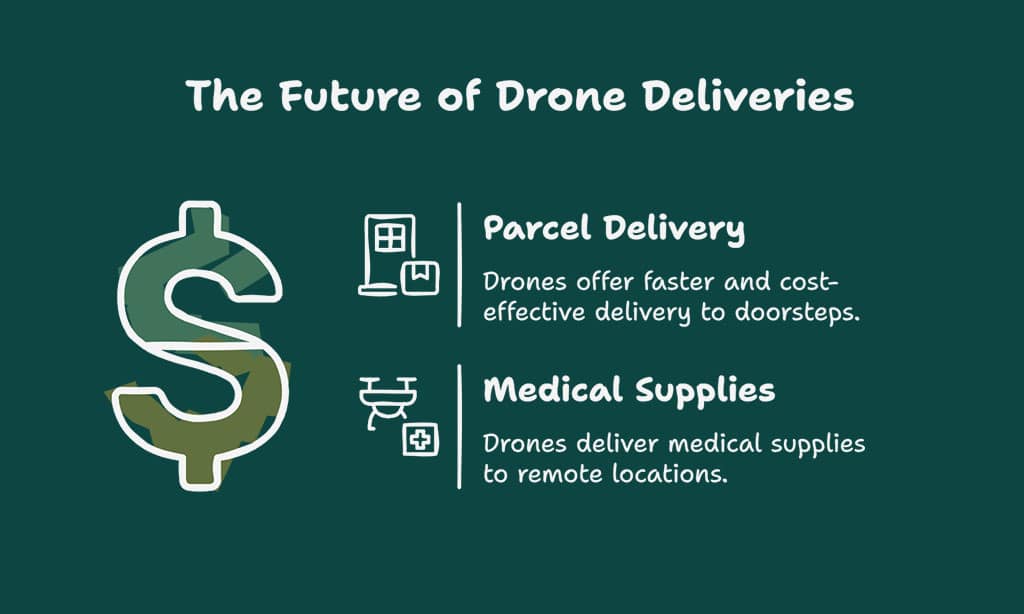As we approach 2025, the logistics industry in the USA is undergoing an exciting transformation, driven by technological innovations, evolving consumer expectations, and an increasing focus on sustainability.
In particular, the COVID-19 pandemic accelerated the adoption of digital solutions, and now businesses are looking to optimize operations further with emerging technologies. The key trends identified in this article will influence everything from the way goods are moved across the country to how businesses manage supply chains, offering new opportunities and challenges.
With consumer demand for fast and reliable services growing, logistics companies must adapt quickly. Those who do will be positioned to thrive in an increasingly competitive environment.
This article delves into the 11 major logistics trends that will shape the USA in 2025, offering insights into how companies can utilize these trends to enhance their operations and maintain a competitive edge.
1. The Rise of Automation in Logistics Operations
The logistics industry is rapidly embracing automation, which is reshaping everything from warehouse operations to last-mile delivery. Automation enables companies to streamline processes, reduce human error, and improve productivity. By 2025, automation will be integral to reducing inefficiencies and keeping up with the growing demand for faster and more accurate deliveries.
Key Technologies Driving Automation
The integration of several technologies is fueling the growth of automation in logistics:
| Technology | Impact on Logistics |
| Robotics | Robots are already used for picking, packing, and sorting items in warehouses. This trend is expected to expand to other areas like inventory management. |
| AI & Machine Learning | AI optimizes routes, predicts demand, and improves inventory management. It’s becoming indispensable for automating decision-making processes. |
| Autonomous Vehicles | Self-driving trucks and delivery vans can reduce human error, increase safety, and lower labor costs in transportation. |
Benefits of Automation in Logistics
- Increased Efficiency: Automation can cut down manual labor and processing times, leading to faster turnaround times and more efficient delivery systems.
- Cost Savings: By replacing manual processes, automation helps logistics companies reduce costs tied to labor and human error.
- Impact on Labor: While automation does reduce the need for manual labor in certain areas, it creates opportunities for skilled workers to manage and maintain the automated systems.
Automation is a significant investment, but businesses that adopt it early stand to reap substantial rewards. Amazon, for example, has already implemented a vast network of robots in its warehouses, which helps streamline operations and improve delivery times.
2. Sustainability and Green Logistics
The logistics industry is undergoing a transformation to become more eco-friendly. Driven by both consumer demand for sustainable practices and increasing regulations, companies are making strides toward reducing their environmental impact. By 2025, sustainability will be a core element of logistics operations, from electric vehicle adoption to green packaging solutions.
Eco-Friendly Transportation Solutions
One of the most visible changes in the logistics sector is the shift toward electric vehicles [EVs] and alternative fuels for transportation. EVs are expected to make up a larger portion of the fleet as companies seek to reduce their carbon footprint. Additionally, biofuels and hydrogen-powered trucks are emerging as alternatives for long-haul trucking.
| Sustainable Initiative | Impact |
| Electric Vehicles | Lower emissions and reduced fuel costs. Companies like FedEx and UPS are already testing electric trucks and plan to increase their use. |
| Carbon-Neutral Shipping | Logistics providers are investing in carbon offset programs and alternative fuels to reduce environmental impact. |
| Sustainable Packaging | More companies are adopting recyclable or biodegradable packaging materials to reduce waste in the supply chain. |
Reducing Supply Chain Footprints
Beyond transportation, companies are optimizing their entire supply chain to be more sustainable. The use of sustainable packaging, for example, can dramatically reduce waste, while adopting green warehouse practices [e.g., energy-efficient lighting, zero-waste initiatives] helps reduce energy consumption and waste generation.
A leading example is Amazon, which has made significant strides in reducing its carbon footprint through initiatives such as the “Shipment Zero” program, aiming for 50% of its shipments to be net-zero carbon by 2030.
3. The Impact of E-commerce on Logistics
E-commerce continues to revolutionize the logistics sector. By 2025, the online shopping boom is expected to persist, and logistics companies will need to adapt to new demands in terms of speed, flexibility, and reliability. Consumers increasingly demand faster delivery times, forcing businesses to innovate their logistics strategies.
Growth of E-commerce and Changing Demand
The growth of e-commerce is clear: In 2020, online sales accounted for 21.3% of all retail sales in the U.S., and this number is expected to rise steadily through 2025. Consumers now expect not only faster shipping but also a range of options, such as same-day or next-day delivery.
| E-commerce Trend | Impact on Logistics |
| Faster Delivery | Customers demand faster shipping. Logistics companies are investing in local fulfillment centers and advanced delivery systems to meet this demand. |
| Increased Online Returns | The growth of e-commerce brings with it a rise in returns. Companies are focusing on optimizing reverse logistics processes to handle returns more efficiently. |
Last-Mile Delivery Innovations
The last-mile delivery process—the final leg of delivery from a distribution center to the consumer’s doorstep—has become the focal point of innovation. The following methods are gaining traction:
| Innovation | Description |
| Drones | UAVs [unmanned aerial vehicles] are being tested for quick deliveries in dense urban areas. Companies like UPS and Amazon are leading the charge in drone testing. |
| Autonomous Vehicles | Self-driving vehicles can speed up last-mile deliveries while reducing costs. Companies like Nuro are piloting autonomous vehicles for deliveries. |
These innovations are key to meeting consumer expectations and reducing delivery costs in the long term.
4. Artificial Intelligence and Machine Learning in Supply Chains
Artificial intelligence [AI] and machine learning [ML] are transforming logistics by enabling more accurate decision-making, predictive analytics, and automation. These technologies allow logistics companies to streamline operations, enhance customer satisfaction, and anticipate market trends.
Predictive Analytics for Demand Forecasting
AI-powered predictive analytics tools help logistics companies predict demand for products, enabling them to optimize inventory levels and reduce stockouts or overstocking. For instance, Walmart uses AI to forecast customer demand at different times of the year, helping to adjust inventory levels accordingly.
| AI Application | Impact |
| Predictive Analytics | AI helps forecast future demand, enabling companies to manage inventory more efficiently. |
| Route Optimization | AI algorithms can help logistics companies optimize routes for fuel savings and reduced delivery times. |
AI for Route Optimization
Route optimization through AI is particularly important for minimizing delivery times and improving operational efficiency. Logistics companies are using AI to analyze traffic patterns, weather, and consumer behavior to recommend the most efficient routes for drivers.
5. Blockchain Technology and Supply Chain Transparency
Blockchain technology holds immense potential for logistics by providing greater transparency, improving traceability, and reducing fraud. By offering a secure, immutable ledger of transactions, blockchain helps verify the authenticity of products and ensures the integrity of the supply chain.
How Blockchain Improves Supply Chain Visibility
With blockchain, logistics companies can track goods from the point of origin to the final destination. The transparent nature of blockchain helps ensure the accuracy of data and prevent fraud.
| Blockchain Benefit | Impact |
| Enhanced Transparency | Every step of the supply chain is recorded on a decentralized ledger, ensuring data is tamper-proof. |
| Faster Transactions | Blockchain reduces the need for intermediaries, speeding up payments and documentation. |
Case Studies of Blockchain in Logistics
- IBM’s Food Trust Blockchain: This blockchain system allows for better traceability of food products, ensuring that consumers can access detailed information about the source of their food, from farm to table.
- Maersk and IBM’s TradeLens: This blockchain-based platform enhances visibility and reduces inefficiencies in global shipping by providing real-time access to data shared by all parties involved.
6. The Growth of 3D Printing and Its Role in Logistics
3D printing is a game-changer for logistics. By enabling on-demand manufacturing, it can significantly reduce the need for large inventories, thereby cutting costs and reducing shipping distances. Companies are already using 3D printing for prototyping, parts manufacturing, and product customization.
On-Demand Manufacturing
3D printing allows products to be made at the point of need rather than requiring lengthy shipping processes. This is particularly beneficial for industries such as aerospace and automotive, where parts can be printed and delivered on demand to reduce delays and transportation costs.
| 3D Printing Application | Impact |
| Part Manufacturing | Companies like General Electric are using 3D printing to manufacture parts locally, reducing supply chain costs. |
| Customized Products | Customization on demand allows businesses to offer tailored products to consumers without relying on large inventories. |
Impact on Warehousing and Inventory Management
The rise of 3D printing could significantly reduce the need for large-scale warehouses. Instead, products could be printed on-site at the point of delivery, leading to a more streamlined and cost-effective supply chain.
7. Advanced Analytics and Big Data in Logistics
As logistics companies manage increasingly complex supply chains, they are turning to big data and advanced analytics for solutions. By analyzing vast amounts of data, companies can gain insights into performance, forecast trends, and optimize their operations.
Data-Driven Decision Making in Logistics
Big data is enabling logistics managers to make informed, real-time decisions about inventory, delivery schedules, and more. Using data-driven insights helps companies stay ahead of disruptions, plan more effectively, and improve customer satisfaction.
| Big Data Application | Impact |
| Predictive Maintenance | Companies use big data to predict equipment failures and proactively maintain assets, reducing downtime and costs. |
| Supply Chain Optimization | Data analytics help logistics companies optimize their supply chain, minimizing inefficiencies and improving delivery times. |
8. Increased Use of Drones in Logistics
Drones have emerged as one of the most talked-about innovations in logistics. These unmanned aerial vehicles [UAVs] are set to revolutionize how goods are delivered, particularly for last-mile delivery. With the ability to bypass traffic congestion, drones offer the potential for faster, more efficient deliveries in urban areas.
The Future of Drone Deliveries
In 2025, drones are likely to become a mainstream method for last-mile delivery, particularly for smaller packages. Companies like Amazon, UPS, and Google’s Wing are already testing drone delivery systems, with pilot programs ongoing in various cities.
| Drone Application | Impact |
| Parcel Delivery | Drones can deliver packages directly to customers’ doorsteps, offering faster and more cost-effective solutions. |
| Medical Supplies | Drones are already being used to deliver medical supplies to remote or hard-to-reach locations, demonstrating their potential for life-saving deliveries. |
Regulatory and Safety Concerns
While drones hold significant potential, there are several regulatory hurdles that must be addressed. In the U.S., the Federal Aviation Administration [FAA] is working on guidelines for commercial drone use, including air traffic management and safety measures. Regulations concerning airspace, drone weight limits, and operating ranges must also be finalized before drones become a commonplace delivery method.
Despite these challenges, drones will play an essential role in the future of logistics, particularly in areas with high delivery volumes and limited ground infrastructure. They offer companies the potential to reduce delivery costs, improve speed, and enhance customer satisfaction.
9. Enhanced Real-Time Tracking and Visibility
In an era where consumers demand transparency and accuracy, real-time tracking has become a crucial element of modern logistics operations. Consumers want to know where their orders are, and they expect accurate, up-to-the-minute updates on their shipments.
The Importance of Real-Time Data
Real-time tracking enables logistics providers to share timely information with customers, which improves the overall customer experience and reduces anxiety around delivery. Moreover, it empowers businesses to act swiftly when issues arise, improving the efficiency of the entire supply chain.
| Real-Time Tracking Technology | Impact |
| Internet of Things [IoT] | IoT devices embedded in packages or shipping vehicles enable real-time monitoring, improving visibility and security. |
| GPS and RFID | GPS and RFID tags allow for precise tracking of shipments from the moment they leave the warehouse to the time they arrive at their destination. |
Technologies Enabling Real-Time Tracking
- Internet of Things [IoT]: IoT sensors on goods, vehicles, and warehouses enable businesses to track shipments in real-time, offering more transparency and control.
- GPS and RFID: GPS is used to track the location of vehicles, while RFID tags help identify products as they move through the supply chain.
With the continued advancement of tracking technologies, real-time tracking will become even more accurate, making it an essential tool for managing logistics operations. Enhanced visibility into the status of shipments helps both businesses and consumers feel confident that products are moving as expected.
10. Global Supply Chain Resilience and Risk Management
As the world becomes more interconnected, the logistics industry faces numerous risks—ranging from natural disasters to geopolitical instability—that can disrupt supply chains. By 2025, logistics companies will be focused on building resilience and mitigating risks to ensure continuity of service even in challenging conditions.
Adapting to Geopolitical and Economic Challenges
Global supply chains are more vulnerable to disruption than ever before. Events such as the COVID-19 pandemic, natural disasters, and trade wars have underscored the importance of resilience in logistics. To address these challenges, logistics companies are exploring new risk management strategies, including diversifying suppliers and using technology to monitor potential disruptions.
| Risk Management Strategy | Impact |
| Supply Chain Diversification | Diversifying suppliers and manufacturing locations reduces dependency on any one region, lowering the risk of disruption. |
| Digital Supply Chain Monitoring | Real-time data analytics help businesses monitor and anticipate risks, enabling proactive responses to emerging threats. |
Diversification of Supply Chain Sources
To mitigate risks associated with global disruptions, businesses are increasingly diversifying their supply chains. This means working with multiple suppliers and considering alternative sourcing regions. Companies are also investing in nearshoring—relocating manufacturing closer to the target market—to minimize reliance on distant and potentially unstable supply chains.
Case Studies of Resilient Supply Chains
- Apple: During the pandemic, Apple’s diversified supply chain strategy allowed it to manage production disruptions better than competitors. Apple leverages suppliers across various regions to reduce the impact of localized disruptions.
- Nike: The global sportswear company has implemented an advanced risk management strategy, using digital tools to monitor the supply chain for potential disruptions, such as factory shutdowns or shipping delays.
As supply chains become increasingly complex and vulnerable, companies that prioritize risk management and resilience will be better positioned to weather future challenges.
11. The Growth of Urban Logistics and Smart Cities
The rapid urbanization of the United States has created new challenges for logistics companies. By 2025, urban areas are expected to be home to more than 85% of the U.S. population. This shift demands innovative logistics solutions that can cope with congestion, demand for faster delivery, and sustainability concerns.
Urbanization and the Need for Efficient Logistics
With more people living in cities, the demand for logistics services will continue to rise. Cities are becoming more crowded, making it harder to navigate for traditional delivery vehicles. This means companies must rethink how goods are delivered in these dense, congested environments.
| Urban Logistics Strategy | Impact |
| Micro-Fulfillment Centers | Companies are building smaller, localized fulfillment centers to serve customers faster and more efficiently. |
| Electric Delivery Vehicles | In dense urban areas, electric vehicles [EVs] are becoming more common for last-mile deliveries due to their environmental benefits and ability to navigate congested streets. |
Smart Logistics Solutions for Urban Areas
As cities become “smart” through technology like IoT, 5G, and AI, logistics providers are leveraging these innovations to create efficient urban delivery networks. For example, smart traffic management systems use real-time data to optimize the movement of delivery vehicles, helping reduce congestion and ensuring timely deliveries.
Case Study: DHL’s Smart Urban Logistics in Frankfurt
DHL has been experimenting with “City Hub” in Frankfurt, Germany, where packages are delivered to local hubs and transferred to small electric vehicles or even cargo bikes for the final leg of the journey. This system has helped DHL reduce emissions and improve delivery times in urban areas.
The Role of Autonomous Vehicles
In urban areas, the adoption of autonomous vehicles will also play a crucial role in the future of logistics. These vehicles can navigate complex city streets, reducing the need for human drivers and allowing for 24/7 deliveries. Companies like Nuro are already testing autonomous delivery vehicles in urban environments.
Takeaways: Embracing the Logistics Trends of 2025
The logistics trends shaping the USA in 2025 will reshape how goods are transported, stored, and delivered across the country. From automation and AI to sustainability and drone deliveries, the logistics industry is moving toward a future that is more efficient, sustainable, and customer-centric.
The companies that embrace these trends early—by integrating automation, adopting sustainable practices, leveraging AI, and focusing on supply chain resilience—will be the leaders in the logistics sector for years to come. By staying ahead of the curve, businesses can ensure that they are prepared for the challenges and opportunities that 2025 will bring.
As the logistics landscape continues to evolve, companies that are agile, innovative, and forward-thinking will not only survive but thrive in the increasingly competitive market.







































